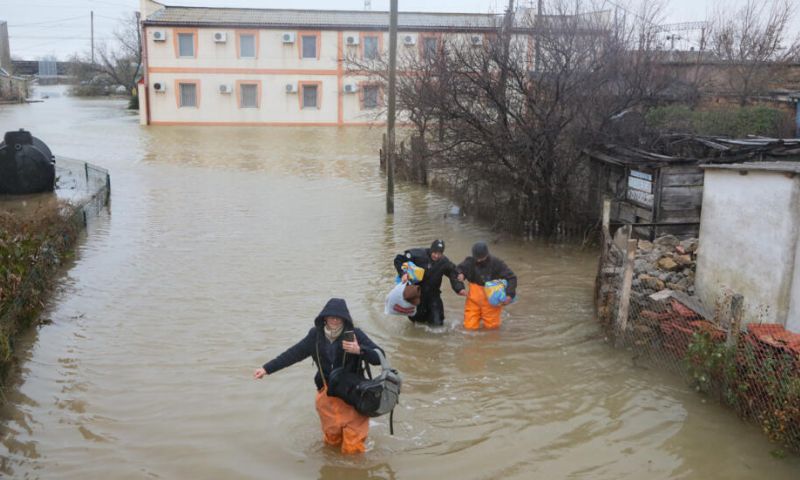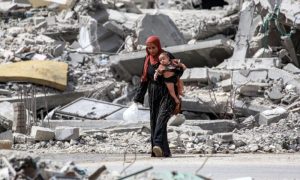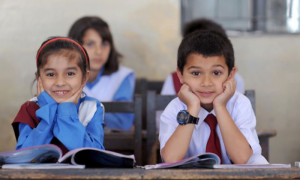DAGESTAN, Russia: In what has been dubbed the ‘storm of the century’ by Russian media, a powerful weather system has wreaked havoc across southern Russia, Ukraine, and Moldova, leaving at least 13 people dead and nearly two million without power.
Hurricane-force winds, heavy snowfall, and flooding have battered regions, leading to significant disruptions and casualties since Sunday.
The affected areas include the Russian regions of Dagestan, Krasnodar, and Rostov, as well as the occupied Ukrainian territories of Donetsk, Lugansk, Kherson, Zaporizhzhia, and Crimea. The severe weather has caused President Vladimir Putin to order the government to take immediate measures to assist the affected regions.
Russia’s energy ministry reported approximately 1.9 million people impacted by power cuts. In Russia and Crimea, four people have been reported dead due to the storms, while Moldova has seen another four fatalities. Ukraine, however, has experienced the most significant impact, with at least five deaths and almost 1,500 towns and villages plunged into darkness after heavy snowfall.
Ukrainian President Volodymyr Zelensky expressed his condolences, stating, “Unfortunately, as of now, there are some deaths. The highest number (of casualties) is in the Odesa region — five people.” The storm brought up to 25 centimetres (10 inches) of snow in some places, leading to treacherous conditions.
Huge waves pounded beachside areas along Russia’s Black Sea coast, with wind speeds exceeding 140 kilometres (about 90 miles) per hour in some locations. The storm claimed the life of a sailor in the Kerch Strait between Crimea and Russia, and a man on the Russian-annexed Crimean peninsula’s southern coast. Two bodies were discovered in Russia’s southern Krasnodar region.
In Moldova, the storm’s toll included two people found dead in a car buried in a snowdrift, a 48-year-old man in the eastern village of Cruglic, and another fatality in Grigoriopol in the separatist region of Transnistria.
The Russian emergency situations ministry reported several injuries in the Krasnodar region, where hundreds of trees were uprooted. A cargo ship, the “Blue Shark,” ran aground in Vitiazevo near Anapa, and the Caspian Pipeline Consortium suspended oil loading due to “extremely unfavourable weather conditions.”
Crimean lawmaker Vladimir Konstantinov described the situation as “armageddon”-like, with unprecedented wind and waves. Parts of Crimea’s coastal highway were closed due to flooding, and ferry services from Sevastopol were suspended. The storm also led to the tragic loss of about 500 marine animals in Sevastopol’s aquarium.
Transportation in southern Russia and Ukraine faced disruptions, with train traffic disrupted along Russia’s Black Sea coast and oil loading suspended at the port of Novorossiysk. Regions in the south, particularly Odesa and Mykolaiv, were hardest hit, and authorities in Odesa reported assisting 1,624 people trapped by snow.
Ukraine’s energy grid, already targeted by Russian forces, faces additional challenges during the winter months. Weather forecasts indicate that downpours will continue in Sevastopol and Sochi, with freezing temperatures expected across much of Ukraine on Tuesday morning. As the affected regions grapple with the aftermath of this devastating storm, rescue and recovery efforts are underway amid challenging weather conditions. The toll on communities and infrastructure highlights the urgent need for assistance and support in the face of this natural disaster.

























